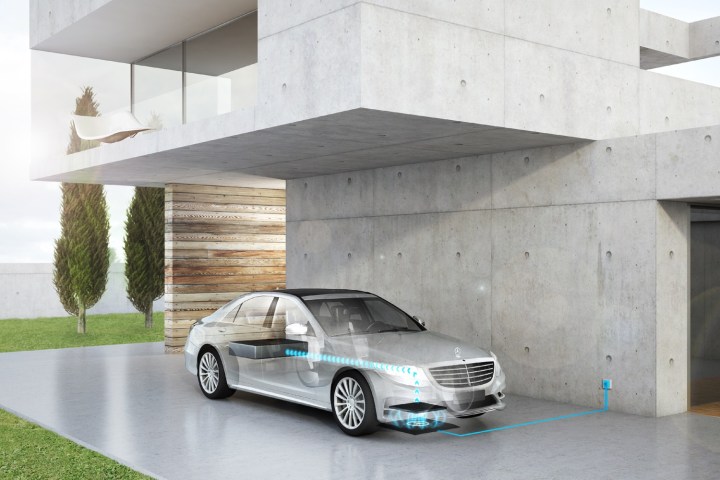
In the latest move to produce more electric vehicles, Mercedes-Benz reportedly has a new EV in the pipeline with its sights set directly for the Tesla Model S. Speaking at a presentation in Croatia regarding the new A-Class hatch, according to Automotive News, CEO Dieter Zetsche apparently told press that Daimler’s first all-electric passenger vehicle will be a full-size sedan called the “EQ S.” Judging by those details, that means it could be based on the next-generation S-Class.
This isn’t the least bit surprising since the S-Class is a pinnacle for technological innovation in the automotive industry. The saying often goes, “if you ever wonder what technology you’ll see in your basic automobile of the future, look at what the current S-Class offers.”
While electric vehicles aren’t “new technology” by any means, this still represents Mercedes-Benz’s first major initiative toward electrifying its entire lineup. This also wouldn’t be the first time a Mercedes-Benz model, or even an S-Class variant, received an electrified powertrain. The current model offers a plug-in hybrid electric variant, called the “S560e.”
In September, Mercedes-Benz’s corporate parent, Daimler, announced an aggressive new electric-vehicle offensive. The plan is to offer an electric version of all of its models by 2022, and they have already begun with the electrification of the latest Smart ForTwo lineup, which we drove late last year. That means four years from now, Mercedes-Benz will have at least 50 electrified models available for sale, utilizing either a hybrid or fully-electric powertrain.
In addition to the announcement of the new EQ S, the automaker also plans to launch new electrified crossover models immediately thereafter. The idea here is to start by launching the brand’s most iconic flagship model to set the precedent while continuing with the rollout of its highest-volume vehicles.

This plan, however, isn’t met without major challenges. Because of significant investments made over the last few years into the Chinese market and manufacturing infrastructure, Mercedes-Benz had to jump back to the drawing board a few times. With recent political and economic tensions brewing uncertainty for the global financial market, particularly with the recent trade wars between China and the U.S. — Mercedes’ two largest markets — the company has been forced to take extra caution with its future profit margin projections. Costs for the development of battery technology and electric vehicles also supposedly surged in recent months.
“We have to increase flexibility in local production as the world in general has become more volatile,” Zetsche said during his presentation.
Zetsche continued to elaborate, noting that Daimler isn’t ruling out any future partnerships with other automakers. For instance, the latest plan also involves further exploring ways to expand Daimler’s current joint-venture with Chinese-based BAIC Motor. Already, however, Daimler is also in collaboration with Renault-Nissan and BMW on other global opportunities.
Editors' Recommendations
- Mercedes G580 electrifies an off-road icon
- Mercedes-Benz EQG: range, price, release date, and more
- Tech giant reveals nice price for new EV to take on Tesla
- New Model 3 ‘takes out the baby fat,’ Tesla designer says in new video
- Tesla video shows off Cybertruck’s Basecamp tent attachment


